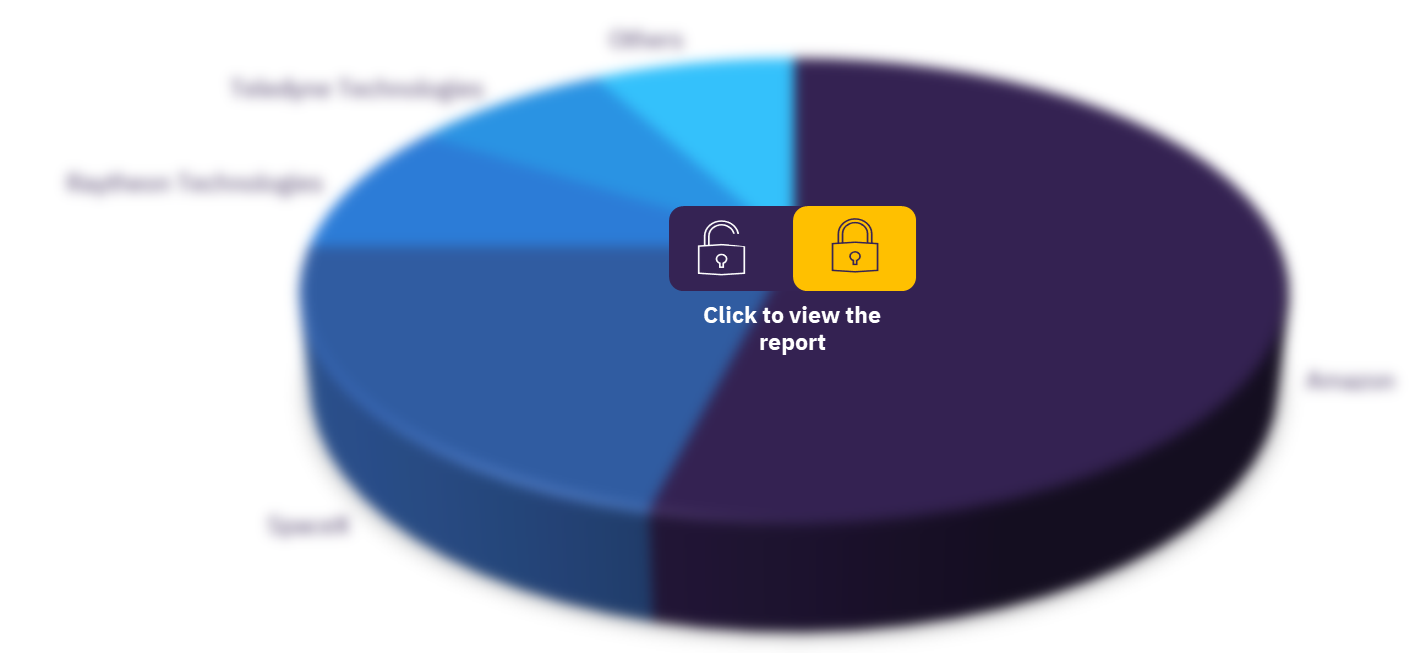Internet from Sky: Can LEO Satellites Transform the Future of Connectivity?
Powered by ![]()
All the vital news, analysis, and commentary curated by our industry experts.
The latest space race aims to provide satellite internet with real-time latency for data-intensive industrial and business-oriented communication applications. A shorter trip is a faster trip, hence LEO satellites positioned nearer to the earth are at an advantage to maximize data transmission. LEOs are secure as communication happens in space and hence are not likely to be influenced by natural catastrophes or man-made disasters. With terrestrial access to broadband increasingly constrained, LEOs potentially raise the bar to provide lightning speed connectivity, to offer ubiquitous satellite internet to a host of industries.
This report highlights the current state of play and the future potential of LEOs in driving uninterrupted communications and low-latency broadband across various communities, which is anticipated to unlock new possibilities for enterprises across industries such as telecom, media, and technology (TMT), aerospace and defense, and transportation, among others.
What are the market dynamics in the LEO market?
The low latency of LEOs compared to geostationary orbit (GEO) and middle earth orbit (MEO) satellites play a crucial role in applications that require real-time data access, such as voice over internet protocol (VoIP), surveillance and imaging, telemedicine, and remote-controlled machines. The proximity of LEOs to the earth’s surface allows their roundtrip delays to be much shorter. This is a key advantage while delivering real-time communication. The launching costs of LEOs are also low compared to GEO or MEO and they can cater to the specific area under their designated location, which unlocks an opportunity to work out a standardized regional pricing strategy.
LEOs are touted to play a key role in connecting millions of IoT-backed devices and sensors, managing the boom in internet users, and minimizing the digital divide to strengthen community resilience. They can be easily synchronized with multiple connected IoT devices via omnidirectional antenna. Since the proximity of the satellites in LEOs are closer to the earth, they support the delivery of 5G IoT networks from space. LEOs’ lower orbital period help them better connect remote and inaccessible regions in emerging economies. They can also backup telcos to optimize their existing backhaul network for the transmission of large volumes of different types of data in compliance with 4G and 5G.
Which are the major industries using LEOs?
LEOs can perform the same tasks as conventional satellites like tracking operations, satellite farming, and earth observation. Hence, they are in use in a few key industries such as aerospace and defense, agriculture and forestry, energy and utilities, TMT, and transportation.
LEO application by key industries
For more LEO industry insights, download a free report sample
What are the emerging concepts in LEOs streamline data management?
The emerging concepts in LEOs streamline data management are LEO pseudo-satellites, LPWA network solutions, tethered LEO picosatellites, EO space telescopes, and LEO-backed BaaS solutions. High-altitude Platform Systems or pseudo-satellites (HAPS) comprise an unmanned aerial vehicle containing communication equipment that connects to the ground station and transmits internet signals. LEOs have successfully connected low power wide-area network (LPWAN) areas that increase the adoption potential of IoT within the LPWA segments. Picosatellites are being designed to investigate space tethers in the LEO. Space telescopes launched on LEO collect particles, such as cosmic ray nuclei and electrons, to detect gravitational waves. Thus, they provide advanced analysis of weather conditions, navigation of assets, and other earth observation initiatives. LEO satellite using blockchain-as-a-service (BaaS) for a private internal network with a single sign-on (SSO) leads to the development of digital supply chain management technologies.
Who are the key organizations leading job postings related to LEO?
Some of the key organizations that are leading the job postings related to LEO are Amazon, SpaceX, Raytheon Technologies, Teledyne Technologies, Netcracker, Astroscale, SAIC, Blue origin, Rocket Lab, and Craig Technologies. Amazon and SpaceX have plans to launch a constellation of more than 7,500 satellites for Project Kuiper and over 4,400 satellites for Starlink to provide access to high speed and low latency broadband internet services. Hence, they recorded the highest number of LEO-related active job postings. Raytheon Technologies wants to deliver high-value LEO satellite missions while Blue Origin aims to develop space station Orbital Reef in LEO for commerce, research, and tourism activities.
LEO market, by key organizations leading in job posting
To know more about key organizations, download a free report sample
Market report scope
| Key industries | Aerospace and Defense, Agriculture and Forestry, Energy and Utilities, TMT, and Transportation |
| Emerging concepts | LEO Pseudo-Satellites, LPWA Network Solutions, Tethered LEO Picosatellites, EO Space Telescopes, and LEO-Backed Baas Solutions |
| Key organizations | Amazon, SpaceX, Raytheon Technologies, Teledyne Technologies, Netcracker, Astroscale, SAIC, Blue origin, Rocket Lab, and Craig Technologies |
This report provides:
- The rise of LEO satellites over geostationary or middle earth orbit satellites, definition and working model, industry segmentation, prominent use cases, active enterprises, and popular vendors
- Highlights of the presentation of LEOs from the media perspective – major news and lauds from social media promoting the technology.
- Includes mentions of LEOs in company annual filings and hiring trends.
- Outlines of the total investment trends, venture capital investment trends, leading investors, corporate investors and investees, prominent M&A initiatives, and notable SPAC deals
- Game-changing company innovations with a spotlight on startups.
- Broad-level analysis of the trends in patent filings and grants, technology leaders, filing trends by technology and industry, priority countries, and some interesting patents in the LEOs technology and application development
- Summary of the drivers and challenges, strategies to address challenges, regulatory landscape, the impact of LEOs on telcos, the impact of LEOs on business connectivity and new concepts emerging as a result
Key Highlights
LEOs overview and high impact industries, major vehicle manufacturers, network providers, and vendors providing solutions in each industry, the noise created in the media, VC investment trends, examples related to the implementation of LEO satellites in aerospace & defense, agriculture & forestry, energy & utilities, technology, media & telecom, and transportation, trends in patent filings and grants, factors driving and challenging the adoption of LEO satellites, regulatory bottlenecks, the impact of LEO satcom operators on existing terrestrial networks, and the future potential of LEOs to generate next-generation applications.
Reasons to Buy
- Captures futuristic technologies which have the potential to disrupt tomorrow.
- Awareness, knowledge, and expertise of these topics to help transform business models and strategic thinking with an in-depth understanding of megatrends that can directly influence patenting, collaboration, acquisition, and investment decisions.
ABL Space
Accion Systems
Airbus
Airtel
Alphabet
Amazon
Analytical Space
Apple
Arqit
AST SpaceMobile
Astra
Astro Digital
Astrocast
Astroscale
Avis Budget Group
AXA XL
BAE Systems
Bayer
BlackSky
Blue Digs
Blue Origin
Bluefield Technologies
Boeing
BP
BridgeComm
BT Group
CACI International
Canon
Cantor Fitzgerald
Capella Space
Cargill
Centricus
CGC Technology
China Aerospace Science and Technology
ChongQing LiangJiang Satellite Mobile Communication
Cloud Constellation Corporation
CNH Industrial
Commsat
Comtech Telecommunications
Craig Technologies
Dauria Aerospace
Descartes
DISH Network
dMY Technology
Dongfanghong Satellite Mobile Communication
DuPont
e5 Lab
Earth-i
EchoStar
EOS Data Analytics
Epic Aerospace
Eutelsat
exactEarth
Exotrail
ExxonMobil
Fincantieri
Fleet Space
FOSSA Systems
Fujitsu
GalaxySpace
Garmin
Geely
General Dynamics
Genesis Park
GHGSat
GlobalFoundries
Globalstar
GomSpace
Grahaa
HawkEye 360
Hera Systems
Hiber
Holicity
Honda Motor
Hughes
Hydrosat
Iberdrola
Iceye
Inmarsat
In-Space Missions
Iridium
Isar Aerospace
John Deere
Kepler Communications
Kymeta
L3Harris
LaserFleet
LeoLabs
LeoSat
Lockheed Martin
Loral Space & Communications
M&M Corp Comm Va
MaxLinear
Mercedes-Benz
Meta
Microsoft
Mitsubishi Electric
Mitsui O.S.K. Lines
Momentus
Nanoracks
NASA
NavSight
Nelco
Netcracker
New Providence
NextGen
Northrop Grumman
NorthStar Earth & Space
NSLComm
Omnispace
OneWeb
Orbit Fab
Orbital Sidekick
OroraTech
Osprey Technology
Panasonic
Pangea Aerospace
Petrobras
Pixxel
Planet Labs
Planetary Systems
PlanetiQ
Porsche
Qualcomm
Radian Aerospace
Radioxio
Raytheon
RedSky Technologies
Redwire
Rocket Factory Augsburg
Rocket Lab
Rolls Royce
Roscosmos
RUAG
SA Photonics
Safran
Satellogic
Saudi Aramco
Scepter
Science Applications International Corporation
Scout
SeerTracking
Shell
Sidus Space
Sierra Nevada Corporation
Skeyeon
Sky and Space (SAS)
Skylo
Skyrora
Slingshot Aerospace
Smiths Group
SoftBank Group
SolAero
Space Norway
SpaceAble
SpaceLink
SpaceX
Speedcast
SpeQtral
Spire Global
StarMesh Global
Sumitomo
Swarm Technologies
Syngenta
Tailwind
Tata Group
TECO Electric & Machinery
Teledyne
Telesat
Terran Orbital
Tesla
Thaicom
Thales
Theia Group
TotalEnergies
Toyota
TrustComm
TT Electronics
Umbra
Vaya Space
Vector Capital
Verizon
Viasat
Virgin Orbit
Vocus
Vodafone
Volvo
XO Markets
Xona Space Systems
Table of Contents
Frequently asked questions
-
Which are the major industries using LEOs?
LEOs are being used in several industries including aerospace and defense, agriculture and forestry, energy and utilities, TMT, and transportation.
-
What are the emerging concepts in LEOs streamline data management?
The emerging concepts in LEOs streamline data management are LEO pseudo-satellites, LPWA network solutions, tethered LEO picosatellites, EO space telescopes, and LEO-backed BaaS solutions.
-
Who are the key organizations leading job postings related to LEO?
Some of the key organizations leading the job postings related to LEO are Amazon, SpaceX, Raytheon Technologies, Teledyne Technologies, Netcracker, Astroscale, SAIC, Blue origin, Rocket Lab, and Craig Technologies.
Get in touch to find out about multi-purchase discounts
reportstore@globaldata.com
Tel +44 20 7947 2745
Every customer’s requirement is unique. With over 220,000 construction projects tracked, we can create a tailored dataset for you based on the types of projects you are looking for. Please get in touch with your specific requirements and we can send you a quote.












